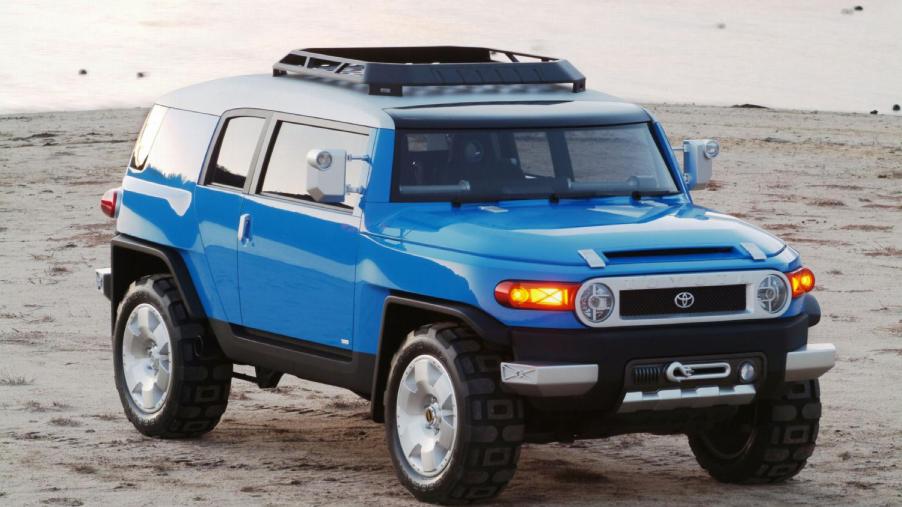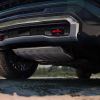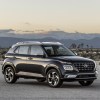
Did the Toyota FJ Cruiser Just Get Unlucky?
Around the turn of the 21st Century, there was a serious retro-styling craze taking hold in the U.S. automotive industry. Vehicles like the Plymouth Prowler, Chevy SSR, and Ford Thunderbird all looked like they belonged in the 1950s, but with modern drivetrains and technology.
Toyota wasn’t immune to the retro bug either. Its whimsical FJ Cruiser featured styling reminiscent of the iconic FJ40, a Jeep-like SUV that was sold from 1960 to 1984 in most parts of the world. Unlike some of the other retro vehicles on the market that were more style than substance, the FJ Cruiser had legitimate off-road chops.
However, the quirky off-road SUV wasn’t long for this world. Discontinued after the 2014 model year, we can’t help but wonder whether the FJ Cruiser was just in the wrong place at the wrong time.
Why did the Toyota FJ Cruiser fail?
Initially, the car-buying public scooped up the FJ Cruiser as quickly as possible. Toyota had anticipated U.S. sales of 40,000 units per year and the FJ sold 56,225 units in its first year of 2006 and 55,170 in 2007, smashing those expectation.
Shortly thereafter, the U.S. housing bubble burst, leading to a severe financial downturn that limited consumer’s ability to buy new cars, combined with a rapid surge in the price of gasoline.
The Great Recession of 2008 sent automakers reeling. General Motors declared bankruptcy and had to kill off its Hummer, Pontiac, and Saturn brands in the name of streamlining costs. Toyota didn’t fare quite as poorly, but FJ Cruiser sales for 2008 fell to 28,688 units, then 11,941 in 2009.
Sales then stabilized at approximately 14,000 vehicles per year, where they remained until the FJ left the U.S. market following the 2014 model year.
It’s easy to point blame at the Great Recession for the FJ Cruiser’s demise, and while it was part of the reason to be sure, there were other factors. Its retro styling was quirky but also quite polarizing, with some off-road enthusiasts stating that it looked like a toy.
The design also made some sacrifices in practicality and it’s been observed that the cabin feels cramped relative to the FJ’s exterior dimensions. Plus, access to the rear seats is awkward, rendering it an impractical vehicle for families.
Would the Toyota FJ Cruiser have been successful in 2023?
Since it was discontinued, FJ Cruiser resale values have not only remained strong, but downright skyrocketed following the Covid-19 pandemic. According to the site classic.com, which tracks past and current collector vehicle sales, the average transaction price over the past 12 months is $26,151, with certain low mileage and/or special edition examples fetching more than double that amount.
However, just because a vehicle is approaching cult status with enthusiasts doesn’t necessarily mean that it will be a slam dunk with the masses. There’s no doubt that U.S. consumers are crazy for trucks and SUVs in 2023, but the FJ still has some caveats, the biggest of which is its narrow, reverse-hinged “suicide” doors that access the rear seats. While technically a four-door, the FJ behaves like a two-door with the rear doors more suited to occasional use than as an everyday family hauler.
Yes, Jeep makes a two-door Wrangler and Ford makes a two-door Bronco Sport, but both of those vehicles sell at much lower rates than their four-door counterparts. The two-door Wrangler represents a mere 10-15% of total Wrangler sales. If Toyota were to bring back the FJ, it would need to offer a longer wheelbase model with four real doors to cater to current consumer sentiments.
Finally, a modern FJ Cruiser would find considerable overlap with Toyota’s newly redesigned 2024 Land Cruiser which is moving away from being a luxobarge and returning to its rugged off-road roots. That’s especially true for the base variant, called the Land Cruiser 1958, which has retro round headlights not totally unlike the FJ.
Timing is everything in the automotive industry
The Great Recession may have expedited the discontinuation of the FJ Cruiser. Still, such specialty vehicles are going to have limited appeal in the best of circumstances, and most folks who loved the FJ concept probably purchased one at the onset, front-loading demand.
On the other hand, a brand like Pontiac was definitely dealt a bad hand courtesy of that same financial crisis. It had recently launched its G8 sedan—a legitimate threat to high-performance European imports—and its sporty Solstice roadster. Those two cars were perhaps not a panacea, but they were a huge step in the right direction for the brand. Unfortunately, the timing couldn’t have been worse.
Finally, the success of Hyundai (and later Kia) in the U.S. received a serious boost from Japanese automakers agreeing to a voluntary export limit of 1.68 million vehicles per year in the ’19’80s under pressure from the U.S. government, which was trying to assist domestic manufacturers.
According to Nikkei, those restrictions continued to limit the supply of Japanese cars sold in American until the year 1994. Hyundai was more than happy to fill the void with cars like their fledging Excel.



